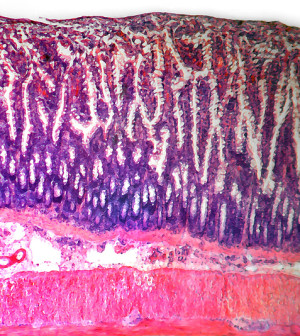- Navigating Your Midlife Crisis: Embracing New Possibilities
- City Raccoons Showing Signs of Domestication
- Mapping the Exposome: Science Broadens Focus to Environmental Disease Triggers
- One Week Less on Social Media Linked to Better Mental Health
- Your Brain Changes in Stages as You Age, Study Finds
- Some Suicide Victims Show No Typical Warning Signs, Study Finds
- ByHeart Formula Faces Lawsuits After Babies Sickened With Botulism
- Switch to Vegan Diet Could Cut Your Greenhouse Gas Emissions in Half
- Regular Bedtime Does Wonders for Blood Pressure
- Dining Alone Could Mean Worse Nutrition for Seniors
3-D Computer Modeling Might Improve Children’s Heart Transplants

A new 3-D computer modeling system may help surgeons choose the best-sized donor heart for children who need a heart transplant, new research finds.
To develop the system, researchers first created a library of 3D images using MRI and CT scans. The images included scans of the hearts of healthy children weighing up to 99 pounds. The library was then used to predict the best donor body weight to ensure the proper heart size for recipients.
The researchers then compared before and after images from infants who already had a heart transplant. They found that their 3D imaging system accurately pinpointed an appropriate heart size.
The findings were to be presented Sunday at the American Heart Association annual meeting in Orlando, Fla. Research presented at meetings is considered preliminary until published in a peer-reviewed journal.
“Three-D reconstruction has tremendous potential to improve donor size matching,” study author Jonathan Plasencia, a doctoral student at Arizona State University’s Image Processing Applications Lab, said in an American Heart Association news release.
“We feel that we now have evidence that 3-D matching can improve selection and hope this will soon help transplant doctors, patients, and their parents make the best decision by taking some of the uncertainty out of this difficult situation,” he added.
Currently, proper heart size is assessed by comparing the donor’s and recipient’s weight and then choosing an upper and lower limit based on the size of the recipient’s heart. However, this is an imprecise method and variations in donor heart size can have a major effect on how well the recipient does, the researchers said.
“As the virtual library grows, the ability to accurately predict donor heart volumes will improve, and analyzing future transplant cases using 3-D matching will allow us to predict the true upper and lower limits of acceptable donor size,” Plasencia said.
He added that the new model may result in more effective organ allocation across the country. And, the prediction model may also minimize the number of acceptable organs that are ultimately discarded due to improper size, he said.
More information
The U.S. National Heart, Lung, and Blood Institute has more about heart transplant.
Source: HealthDay
Copyright © 2025 HealthDay. All rights reserved.










